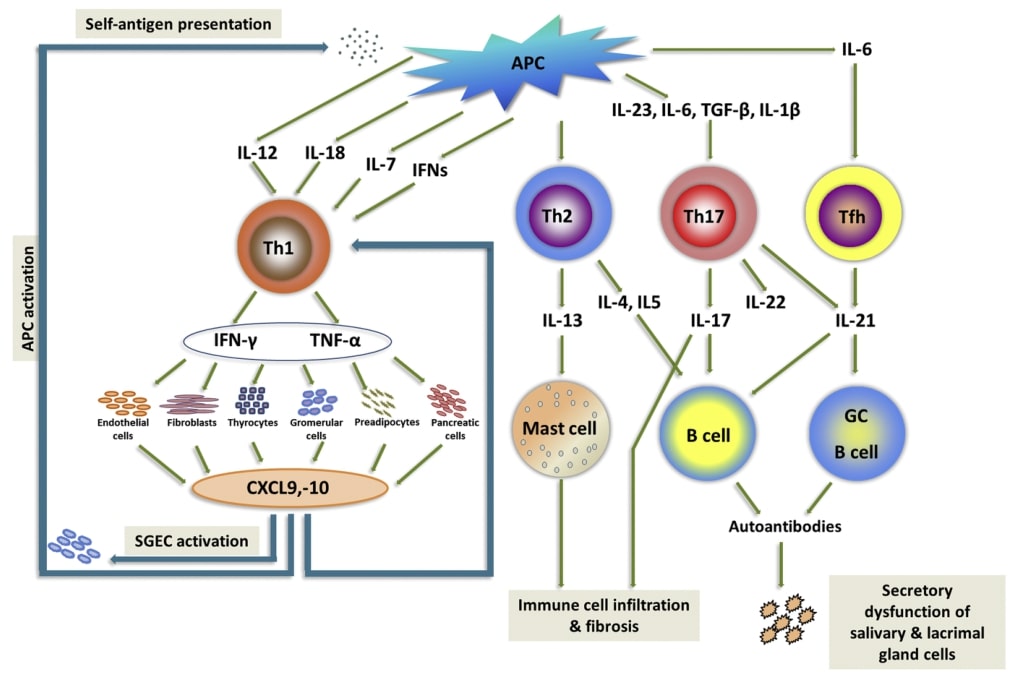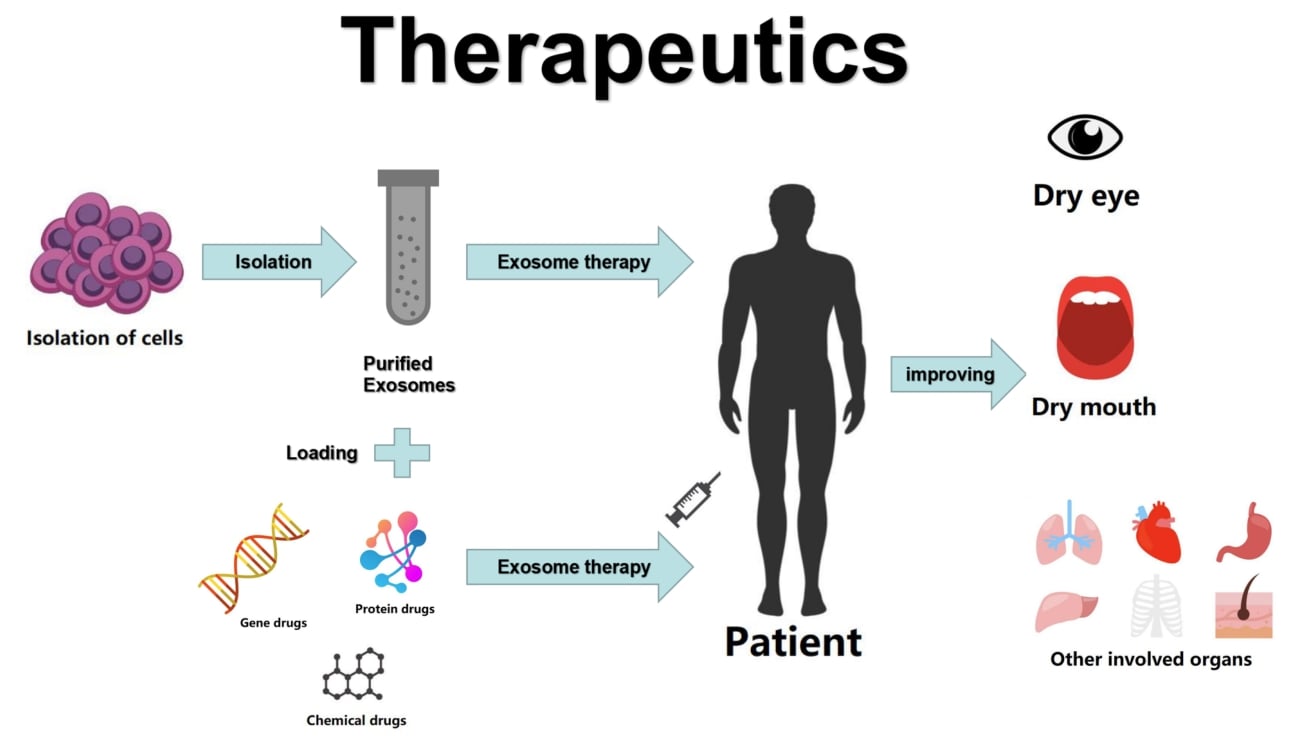Therapeutic Exosomes for Eye Dryness
Exosomes are novel candidates for the management and treatment of eye dryness, filling the gap for new therapeutic approaches in the era of personalized medicine. Taking advantage of the low immunogenicity, high biocompatibility, long half-life and delivery across the blood-brain barrier, the extension of exosomes to eye dryness research will advance existing therapeutic approaches. Creative Biolabs is experienced in custom preparation and functional validation of exosomes and is able to provide high quality exosome development services related to support eye dryness therapeutic exosome discovery.
Pathogenesis of Eye Dryness
Eye dryness is caused by chronic autoimmune exocrine gland disease, an autoimmune and inflammatory response mediated by lymphocyte infiltration of the lacrimal gland, resulting in lid gland dysfunction. Patients with dry eyes typically present with conjunctival redness and superficial punctate keratitis, often accompanied by high tear film osmolarity and signs of capillary dilation. Th1 cells are the main etiology involved in eye dryness, not only binding to MHC-II to activate the immune response, but also releasing pro-inflammatory factors such as IL-1b, IL-6, TNF-α and INF-γ. In addition, elevated levels of IL-17 and IL-18 maintain an inflammatory response in the gland that correlates with the severity of the disease. Also, abnormally elevated serum levels of common B-cell activating factor (BAFF) in patients with dry eyes stimulate the proliferation and activation of B cells, which is mediated by INF-1/2 secreted by plasmacytoid dendritic cells (pDCs). Mature B cells then produce anti-Ro/SSA and anti-La/SSB autoantibodies and lead to extraglandular complications such as musculoskeletal pain, ichthyosis, and non-Hodgkin's lymphoma.
 Fig.1 Proposed model for effector immune system involvement in eye dryness pathogenesis. (Psianou, 2018)
Fig.1 Proposed model for effector immune system involvement in eye dryness pathogenesis. (Psianou, 2018)
Therapeutic Exosomes for Eye Dryness
The idea that exosomes are filled with biologically active substances such as cytokines, nucleic acids and proteins that not only mediate the long-distance transmission of complex active molecules between cells but also induce various physiological and functional responses in target cells has been supported by a variety of preclinical trials. Currently, the use of drugs to alleviate eye dryness disorders, including non-steroidal anti-inflammatory drugs and immunosuppressive drugs, still carries the risk of causing adverse reactions. Encouragingly, the potential of exosomes as crucial players in the regulation of inflammation and immunity in autoimmune diseases has received extensive attention. For example, mesenchymal stem cell-derived exosomes can alleviate the symptoms of ocular dryness in experimental uveitis through the inhibition of migration of inflammatory cells to the eye socket, which carries miRNA-126 that reduces the activity of the high mobility group protein 1 signaling pathway. In addition, therapies targeting anti-B cells are also underway in preclinical trials, including anti-CD20/ anti-CD40 monoclonal antibodies to reduce antigen presentation by B cells, anti-BAFF receptors to inhibit BAFF activity and the anti-inducible co-stimulatory ligand ICOSL to reduce T cell activation. Thus, given the carrier advantages of penetrating biological barriers such as the blood-brain barrier and the blood-retinal barrier, delivery of the above-mentioned immunosuppressive and anti-inflammatory agents by exosomes could improve more significant B-cell depletion and associated efficacy.
 Fig.2 Exosomes as therapeutic tools in eye dryness. (Huang, 2020)
Fig.2 Exosomes as therapeutic tools in eye dryness. (Huang, 2020)
The unique structural composition and biological effects have led to promising research on therapeutic exosomes for dry eyes, and preclinical studies have shown that exosomes can improve ocular health and disease conditions. Creative Biolabs provides research and development services related to exosomes and is committed to solving the challenges of dry eye research for our clients. Please feel free to contact us.
References
-
Psianou, K.; et al. Clinical and immunological parameters of Sjögren's syndrome. Autoimmun Rev. 2018, 17(10): 1053-1064.
-
Huang, Y.; et al. Recent advances in the use of exosomes in Sjögren's Syndrome. Front Immunol. 2020, 11: 1509.
For Research Use Only. Cannot be used by patients.
Related Services:

 Fig.1 Proposed model for effector immune system involvement in eye dryness pathogenesis. (Psianou, 2018)
Fig.1 Proposed model for effector immune system involvement in eye dryness pathogenesis. (Psianou, 2018)
 Fig.2 Exosomes as therapeutic tools in eye dryness. (Huang, 2020)
Fig.2 Exosomes as therapeutic tools in eye dryness. (Huang, 2020)









